
Collection, the great holy grail of horsemanship. It’s the unicorn many amateur riders spend years of practice and thousands of dollars chasing. In its simplest form, collection is raising the back and engaging the hind end under the horse to provide impulsion. But how does collection really work?
Top vs. Bottom
Let’s start with the neck. There are two primary parts that we need to be concerned with; the nuchal ligament and the brachiocephalicus muscle. The nuchal ligament is the portion of the neck that controls the so called “top neck muscle.” This is a ligament that starts at the poll and runs down through the crest of the neck until it meets the supraspinous ligament which continues across the withers and down the back to the hindquarters. The brachiocephalicus muscle is the dreaded “bottom neck muscle” that haunts us all, popping up at the most inconvenient of times.

The nuchal ligament is what we aim to build up with proper collection. When the horse relaxes and drops his head, the nuchal ligament engages and pulls the back up, leaving the brachiocephalicus muscle disengaged. This is why we’re all so worried about getting the horse’s head down and it is the driving force behind the market for all those “head down” gadgets you find all over the internet and tack shops. There is one key point all those gadgets are missing though: relaxation.
Forcing the horse’s head down does not engage the nuchal ligament unless the neck relaxes. If the horse is fighting the gadget, the brachiocephalicus muscle is still engaged and will continue being built up. This is the exact opposite of what we want. There is no shortcut or cheat for proper collection. The neck does not lie. If you try to achieve collection by force, it will be painfully obvious.
A horse that is ridden correctly with have pronounced upper neck muscles and a greatly reduced lower brachiocephalicus muscle. This will result in the beautiful arched neck that is so attractive to the eye.
A horse that is ridden incorrectly will never be able to achieve that beautiful arch because the brachiocephalicus muscle will continue to grow and become more pronounced.
Lateral Flexion
The brachiocephalicus muscle is responsible for the movement of the front legs and lateral flexion in the neck.
The natural horsemanship craze that has swept through the horse industry over the past decade or so has overemphasized lateral flexion to the point that they have horses touching the rider’s toes. In my article on lateral flexion of the poll, we discussed how the point of lateral flexion is to loosen up the poll (blue). But, the lateral flexion popularized by natural horsemanship gurus looks something like this:
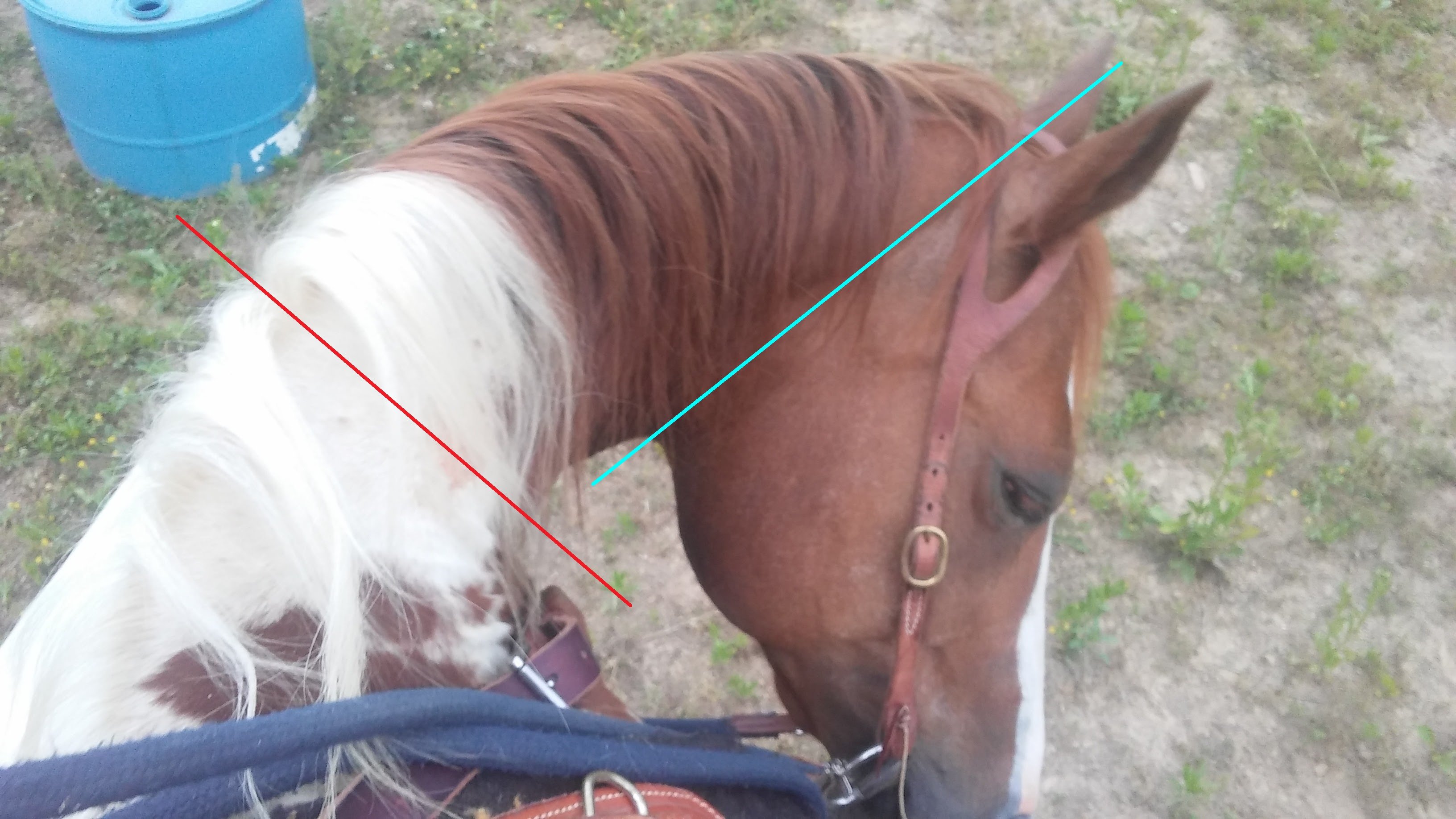
Note how the flex point (red) is nowhere near the poll (blue). With the flex point this far back in the neck, the only thing being accomplished is strengthening the brachiocephalicus muscle by laterally flexing the neck.
So, even if you are riding you horse correctly otherwise, if you subscribe to the natural horsemanship philosophy and use this extreme method of lateral flexion, you are still building up that bottom neck muscle.
The Suspension Bridge
The supraspinous ligament over the back acts like a suspension bridge. When the nuchal ligament is engaged, the supraspinous ligament pulls the back up. But, if the brachiocephalicus muscle is engaged through forcing the head down, the suspension bridge of the supraspinous ligament collapses and the back hollows out. Thus, the head is down, but the back is still hollow.
This is where a lot of miscommunication has happened over the years. Too many of the old-time trainers who are great horse trainers are not always the best people trainers, so there is often some miscommunication that happens through the generations. It’s like that game you probably played as a kid, telephone, where you whisper a message from one person to the other until it gets to the end of the line and has somehow changed significantly from the original message.
Each generation of horse trainers tries to pass the secrets of collection to the next, but somewhere along the line the nuance gets lost. “Head down means the back is up and the back being up means collection” becomes “head down is collection.” Suddenly we have a generation that thinks head down is the magical solution to collection and they come up with every imaginable gadget – and a few unimaginable – to achieve a low headset, completely missing that the head being down is only a symptom of the greater goal, the back being up.
Tracking Up
You may here the collection nerd posse obsessing over how much a horse is “tracking up” and wonder what one earth we’re talking about. Tracking up simply refers to how close the back hoof is to landing in the footprint of the front hoof. Ideally, the back hoof should be land in or in front of the hoofprint of the front hoof.
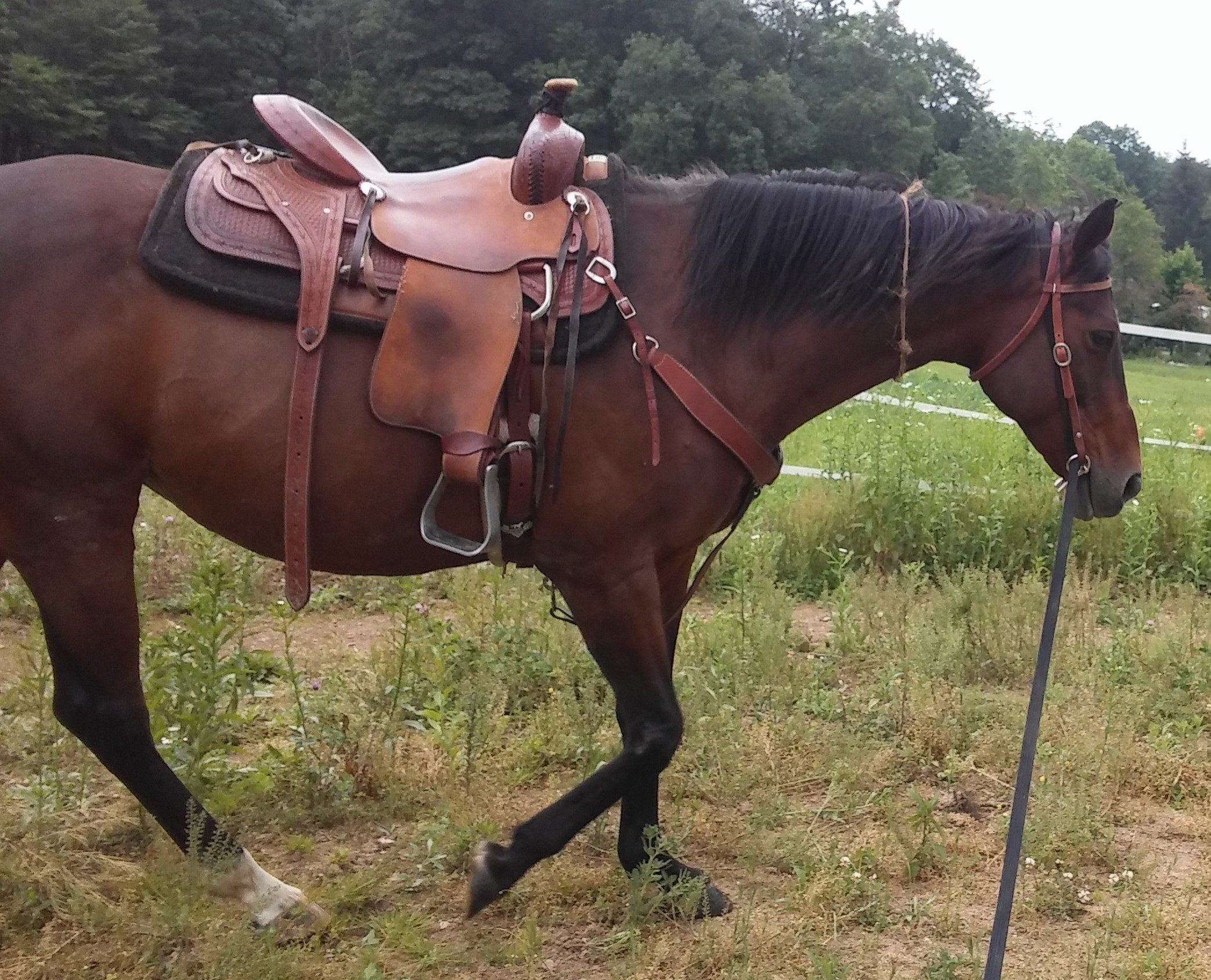
Why are we all so obsessed with how far the horse reaches under with the hind legs? Remember that the horse’s body is a suspension bridge that is all linked together. When your horse stretches under with his hind legs, he is simultaneously pulling his back muscles taunt which helps pull the back up. A horse cannot track up properly if the back is not up and a horse that has his back up will be tracking up properly. The neck doesn’t lie, but the hoofprints don’t either.
Weight of the Saddle Proportional to Topline Development
Here is another problem that a lot of western trainers run into. Western saddles a heavy. Depending on the style, a well made western saddle can weigh an excess of 40 to 50 pounds. Add the weight of a rider — let’s say an average of 150 pounds — and that’s 200 pounds on an under developed back. A lot of western horses are small quarter horses under 16hh. Many are between 800 to 900 pounds. That’s a lot of weight for an undeveloped. Rule of thumb for carrying weight on a fit horse is 20% of their body weight. If you have an 850 pound horse, that’s 170 pounds total for tack and rider. If the horse has an underdeveloped topline, that number decreases significantly.
This is where I like to use a dressage saddle. I am fortunate that I am all of 5’0″, 130lbs. Moose is about 880 to 900 pounds when she is fit. My heavy ranch saddle is at least 50 pounds. It fits Moose perfectly, but I won’t use it if she’s out of shape. I have a dressage saddle that is significantly lighter and I can definitely tell the difference. After several weeks of not being ridden this summer due to my battle with seizures, Moose has lost quite a bit of topline. I’ve had to go back to the dressage saddle to build her back up because I could tell she was struggling under the weight of the western ranch saddle.
It is vital to allow a horse to carry weight that is proportional to their topline development. Expecting an out of shape horse to carry 20% of their body weight is too much for many horses. Horses with longer backs or weak leg structure should carry even less than horses with optimal conformation.
What tools are acceptable to use to achieve collection?
We’ve talked about how gadgets do more harm than good when it comes to collection, but there are a few tools that, when used appropriately, can help achieve the relaxed, head down state needed for collection. My favorite is a chambon.
I will preface this with a note of caution: if you have never used this tool before, please consult a professional before using them as it is dangerous and harmful if used improperly.
The chambon is a classical dressage aid invented by the French. It applies light pressure to the poll to encourage the horse to relax the head down and stretch to meet the bit. If it is pulled too tight the horse will fight it and be counterproductive. The point is to maintain softness and only encourage the horse to put their head down, not force them.
This simple design has since been incorporated into several fancier gadgets that claim to have “improved” upon the original design, but don’t be fooled. The original, simple style is a useful tool. Anything else is a shortcut gadget. I’ve highlighted the chambon in red below so you can see exactly what it is. The piece going around her neck is the reins that are run through her throat latch to keep them up out of the way.
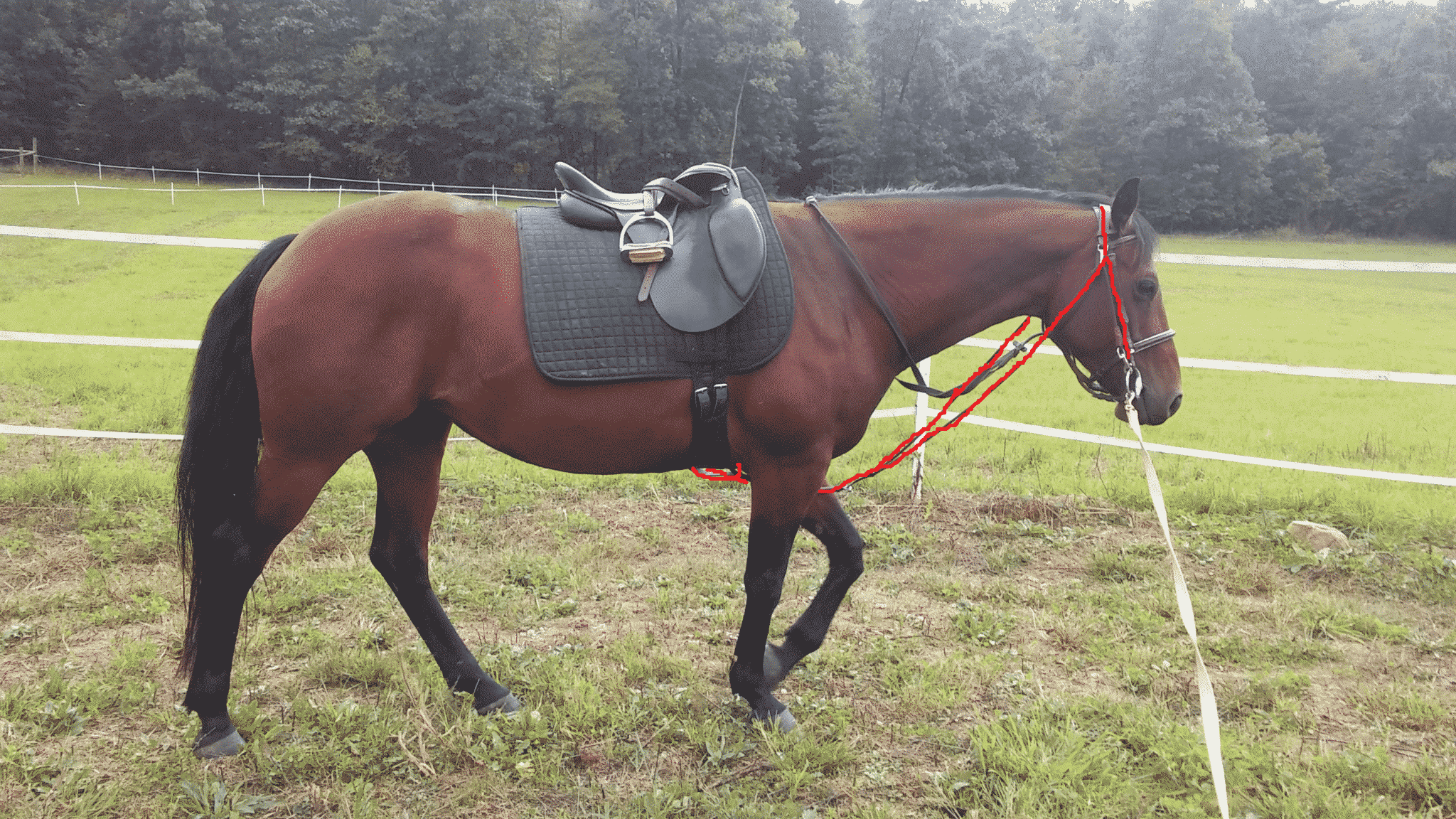
If you notice in the photos below, the chambon is not pulled tight. Moose can get her head up and engage her brachiocephalicus muscle, but when she does, there is a slight pressure applied to her poll to encourage her head to relax down and seek the bit.
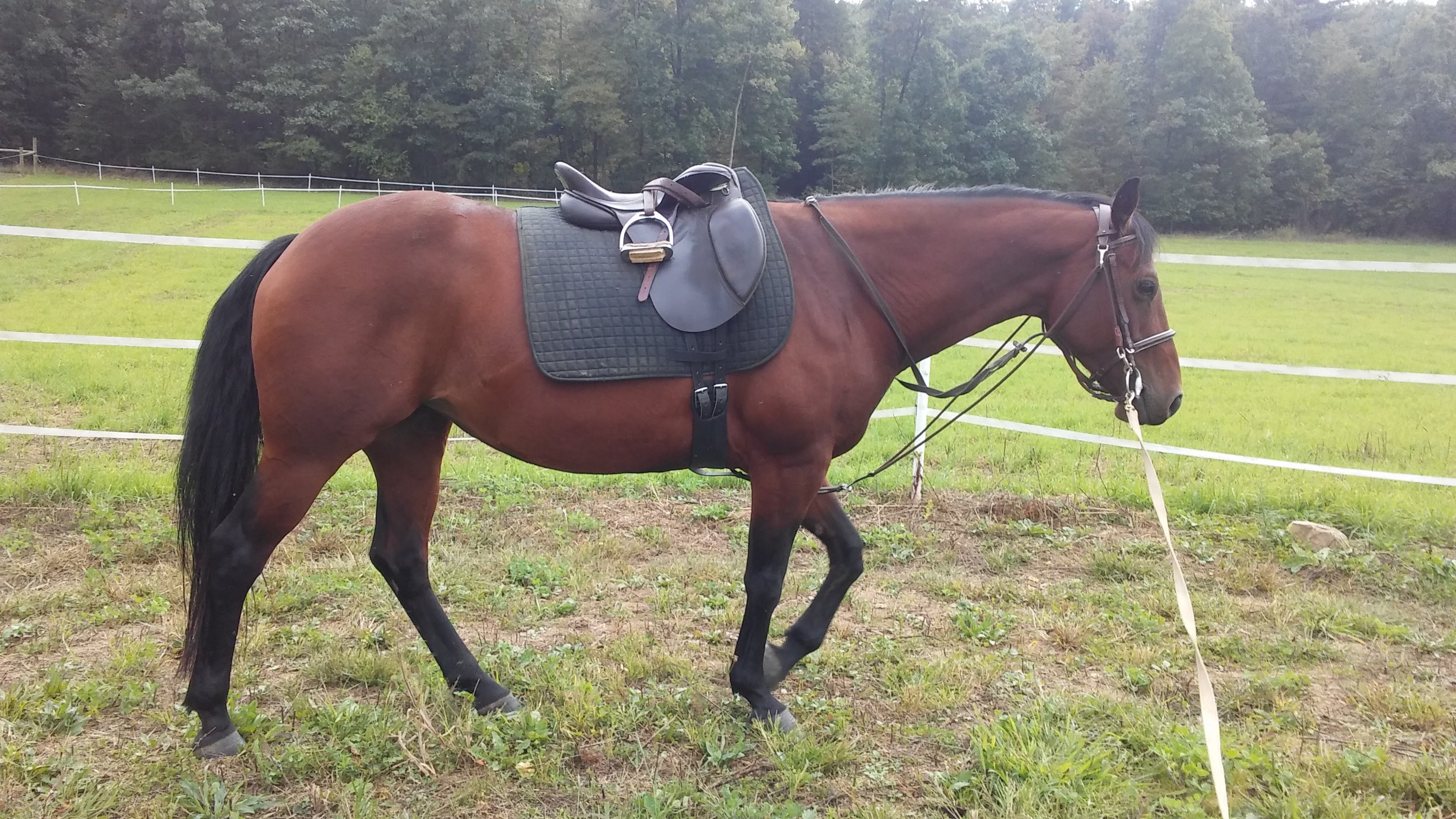

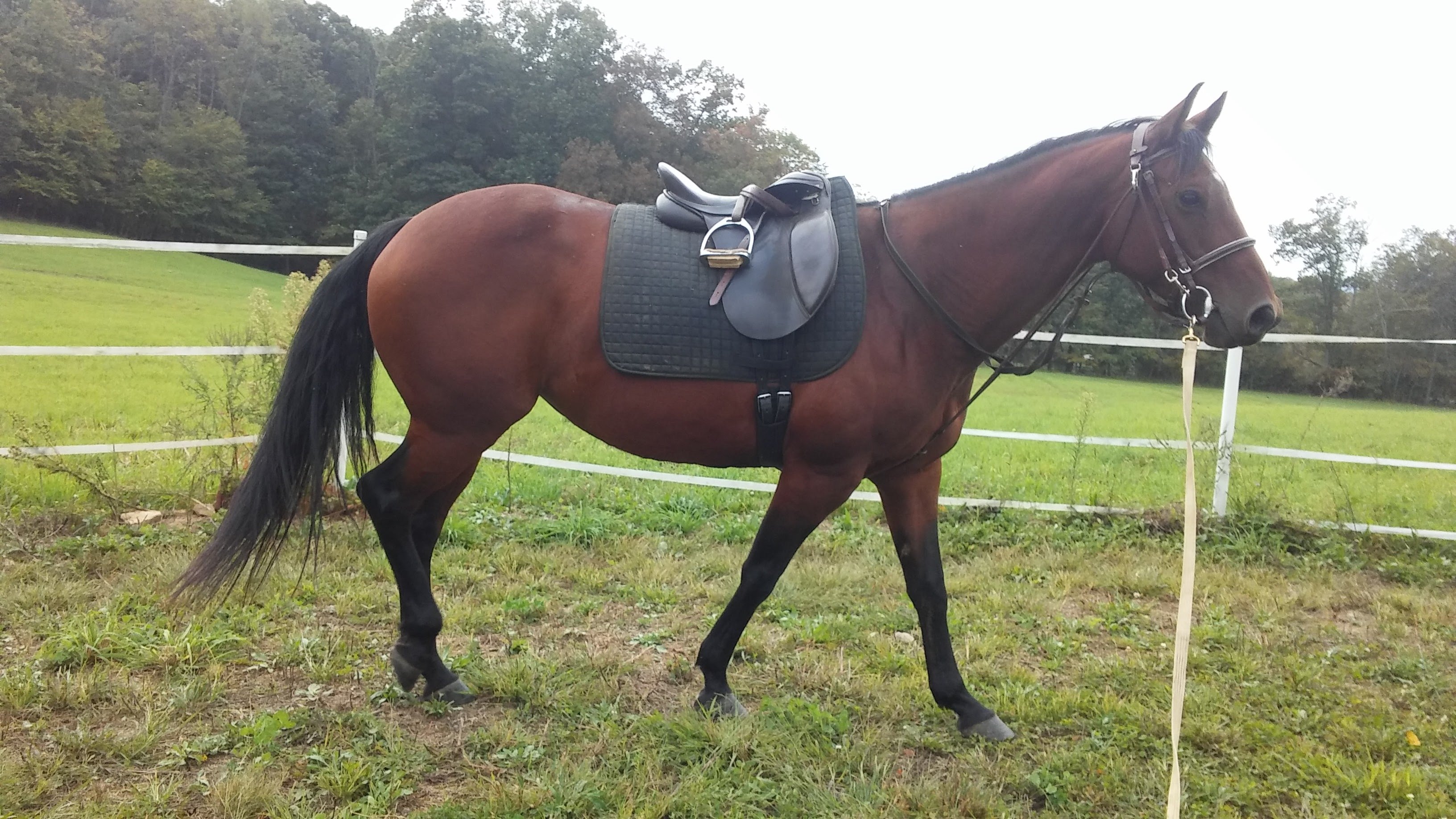
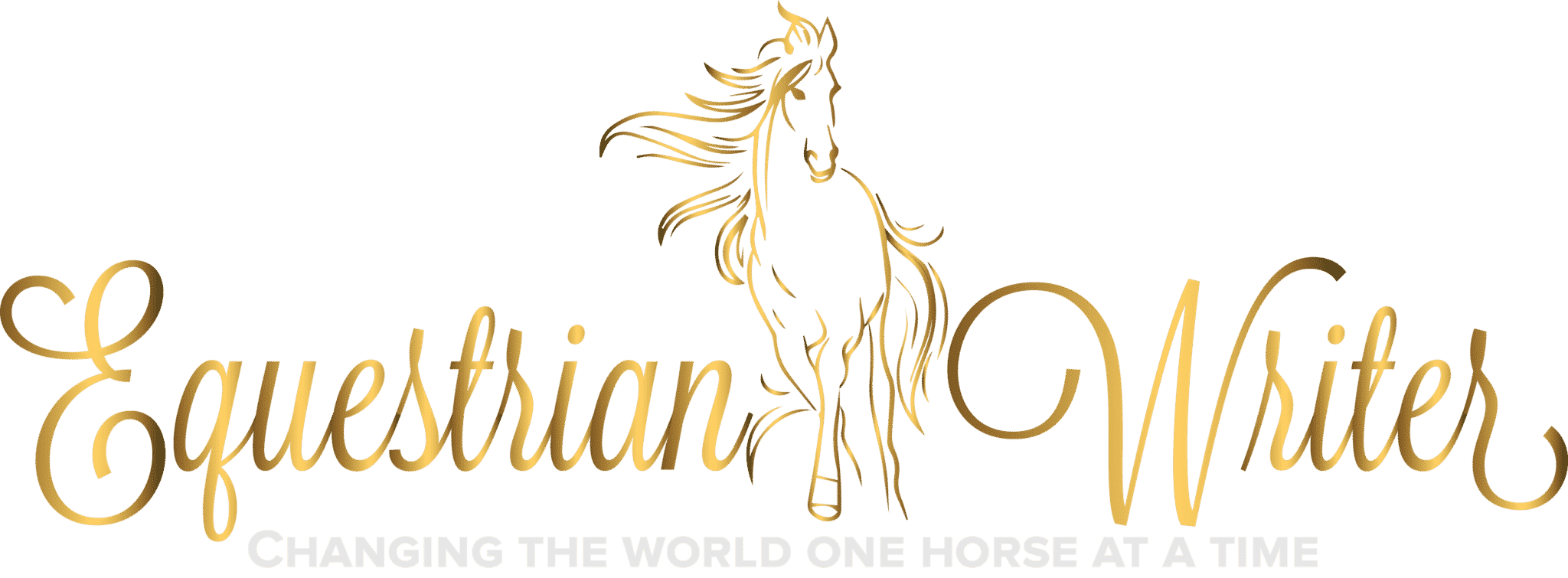





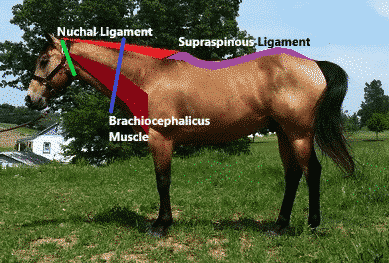
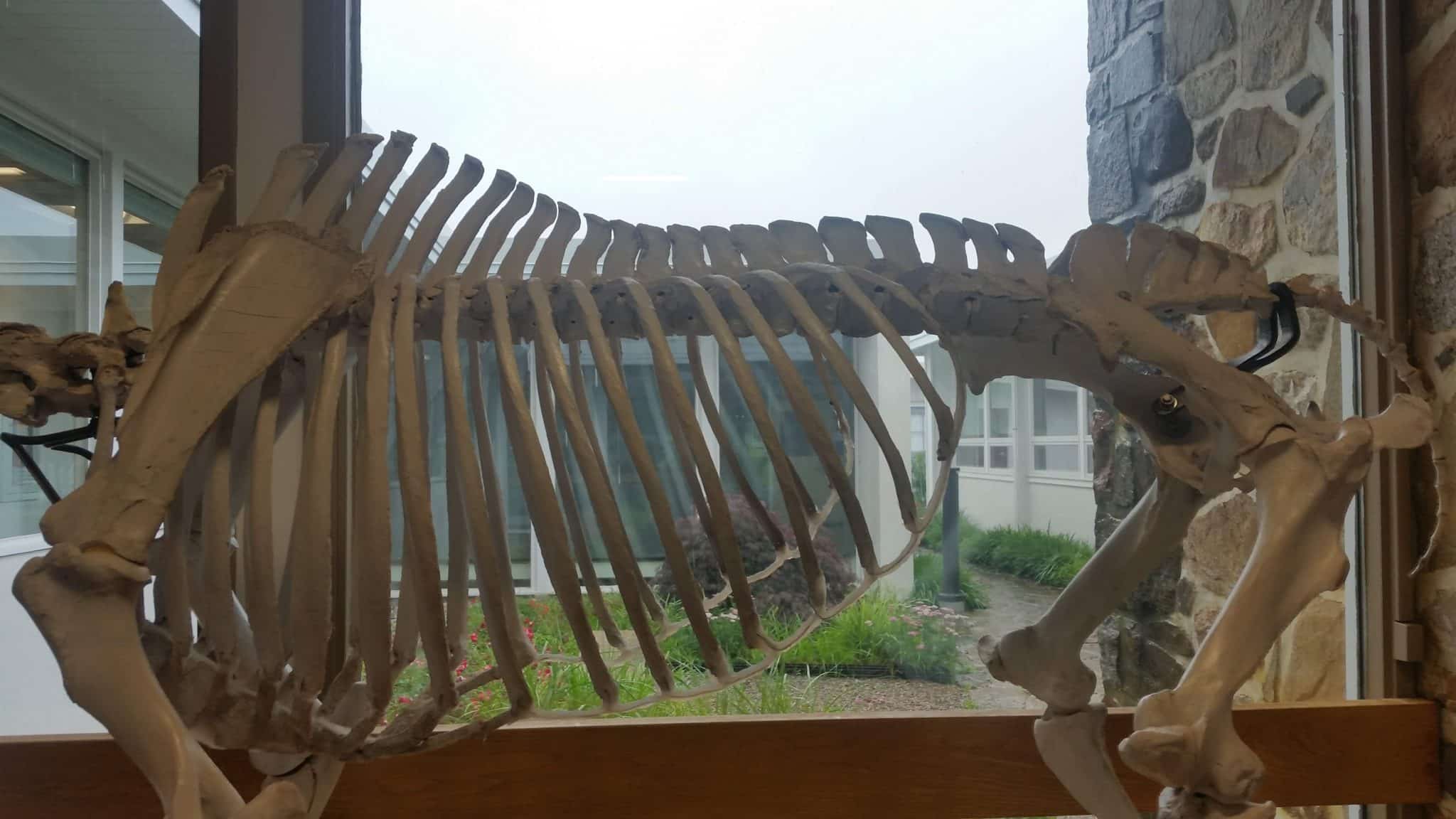
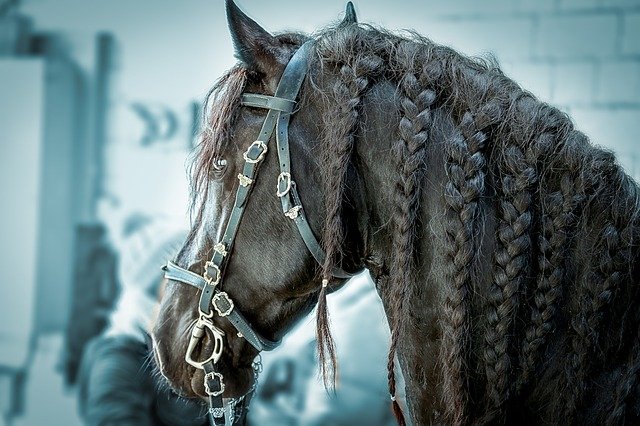
You do not seem to understand what “collection” is you have no definition of it. The article just rambles on with no definition ..Poor article…. poor methods…yielding poor results.